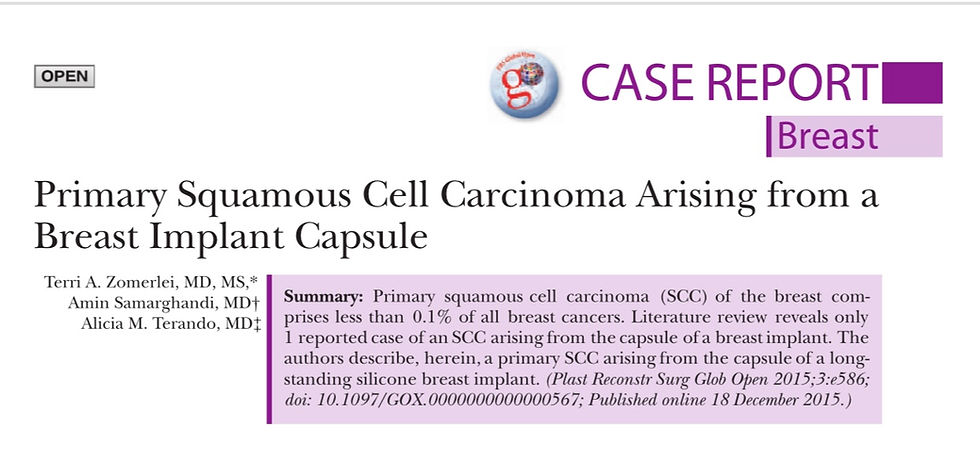Squamous Cell Carcinoma Arising in Breast Implant Capsules
- gpacunitedrobyntow
- Oct 22, 2021
- 1 min read
Annals of Plastic Surgery | March 2021
Breast augmentation and reconstruction utilizing implants are among the most common plastic surgery procedures performed in the United States. A small proportion of these implants are removed each year. We report 2 cases where routine pathologic evaluation of capsulectomy specimens revealed squamous cell carcinoma associated with the breast implant capsule and discuss the possible pathogenesis of this unusual entity. Both patients had long-standing implants (>10 years) and presented with acute unilateral breast erythema and swelling. Intraoperatively, the capsules for both cases appeared thickened and calcified, containing extensive granulomatosis and keratinaceous debris invading into the chest wall. Extensive workup failed to find an occult primary. One patient died from a malignant pleural effusion secondary to tumor invasion during chemotherapy, and the second patient obtained stabilization of the mass after 5 weeks of chemotherapy but subsequently declined further surgical intervention. A thorough literature review was performed, and 5 similar reports were identified, involving 6 patients. All patients presented with similar clinical presentations as ours and had poor outcomes. The mean reporting age at diagnosis was 60 years, and the average time from initial implant to diagnosis was 25 years. Due to the small numbers of squamous cell carcinomas associated with breast implant capsules, the true association between the 2 is unknown. It is postulated that chronic inflammation/irritation from the breast implant and epithelialization of the capsule play a significant role in the disease process. This may represent a new entity of “chronic inflammatory capsular malignancies.” Increased awareness of this entity may allow for earlier suspicion, diagnosis, and management.



Comments